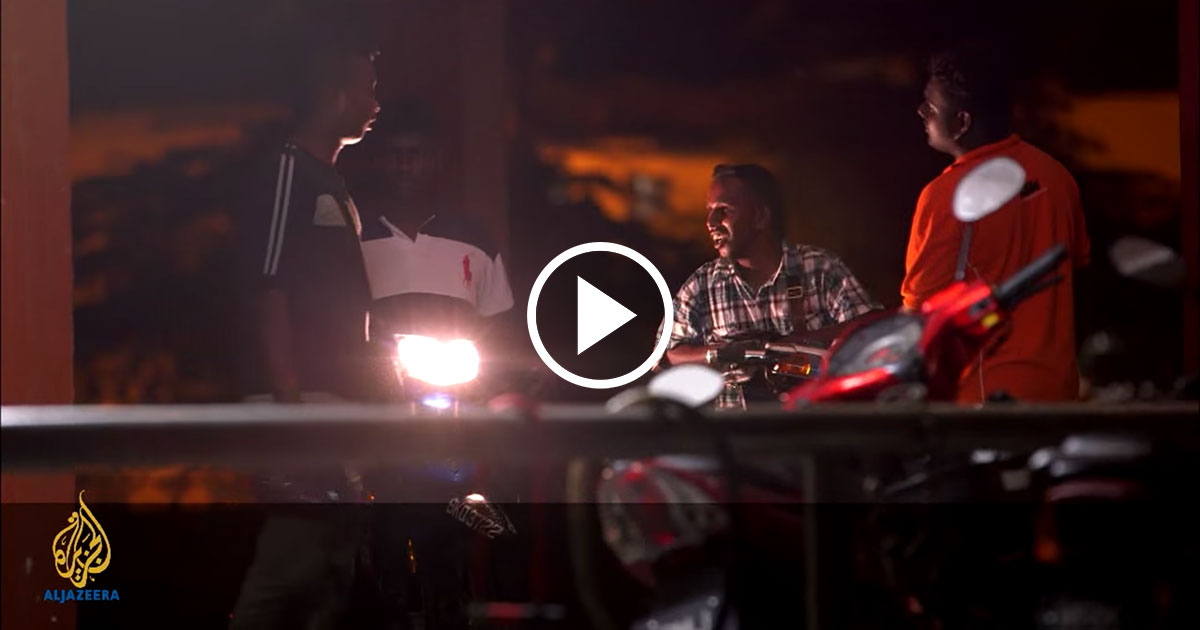
Malaysia’s Gang Menace
Share this

Share this
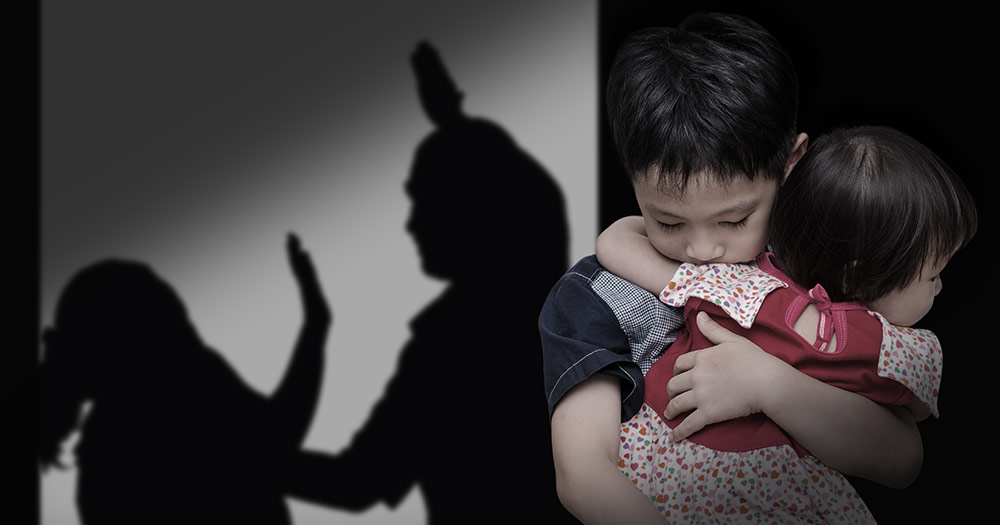
There are many abusive relationships, and the only question to ask is: why?
The main answer is ‘control’.
The controlling characteristic that males attribute to their masculinity is the cause to these abusive relationships. When males don’t have control they feel their masculinity is threatened and they need to do something about it.
Here are some of the causes that can lead to domestic violence and abusive relationship.
1. Disagreement between a married couple.
The husband might be too controlling and might be making decisions of the family that only suit himself. Financial problems are the main causes of disagreements between a married couple.
2. Jealousy.
Some men are very jealous and envious that they end up making up suspicions and wrongly accusing their wives for infidelity. They probably do not want to see them talking to any man, even a family member except them.
3. Some men have grown up witnessing Domestic Violence between their parents.
This can affect them in two ways. Either psychologically resulting in a mental disorder and anger issues or they start to think it’s the only way they can solve their problems.

4. Alcohol and Drug abuse.
The influence of alcohol can enable violence because there will be no control of what you are doing and your behaviour changes. 61% of domestics violence has alcohol involved. Some men use alcohol as an excuse for abusing their wives.

5. Some societies do not have strong laws to support women against abuse.
The issue is often tolerated and seen as a normal thing and is justified. Low level of education contributes also as beating wives is still seen as a way of having control over your family. Which is wrong.
Domestic Violence should never be justified or excused.
So below are some key steps you can follow:
1. Be alert and take note of his behaviour changes.
Signs that show your partner can resort to Domestic Violence. These include mood swings that are unpredictable, Jealousy as mentioned earlier on, a controlling behaviour or explosive behaviour and lastly when he is making threats such as, I will kill you or beat you up. You can pick up these signs even before marriage. I have seen it even amongst teenage relationships. They are often short tempered, lack of respect and even alcohol abuse. You should not feel like you need to stay in a abusive relationship. You need to cut ties as soon as possible.
2. Try to maintain a healthy relationship with your partner.
If you have any concerns or problems, you need to help yourselves through counselling or to ask help from friends or family members. Not dealing with these issues will only make it difficult down the road. You need to be able to address your issues together and in a civilized manner. But this is only when there is a disagreement not after he has abused you.
3. You need to be aware of Association that are specifically for women in your community.
Women’s Aid Organisation (WAO) opened Malaysia’s first refuge to abused women in 1982. They provide shelter, counseling and social work for victims of Domestic Violence. Most of these Organizations educate both women and young girls on abuse, its impacts and how to be safe.
Training for volunteers // image via WAO Official Website
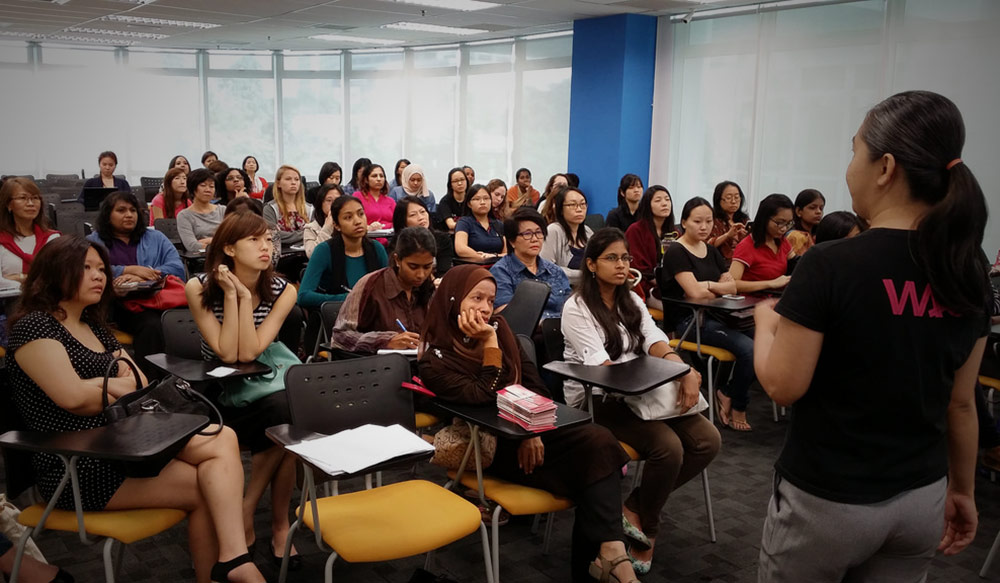
WAO Hotline: 03 7956 3488
WhatsApp/SMS TINA: 018 988 8058
WAO Hotline: 03 7956 3488
WhatsApp/SMS TINA: 018 988 8058

1 in 4 women experience Domestic Violence during her lifetime and more than half of these women have children that watch them helplessly as they are abused.
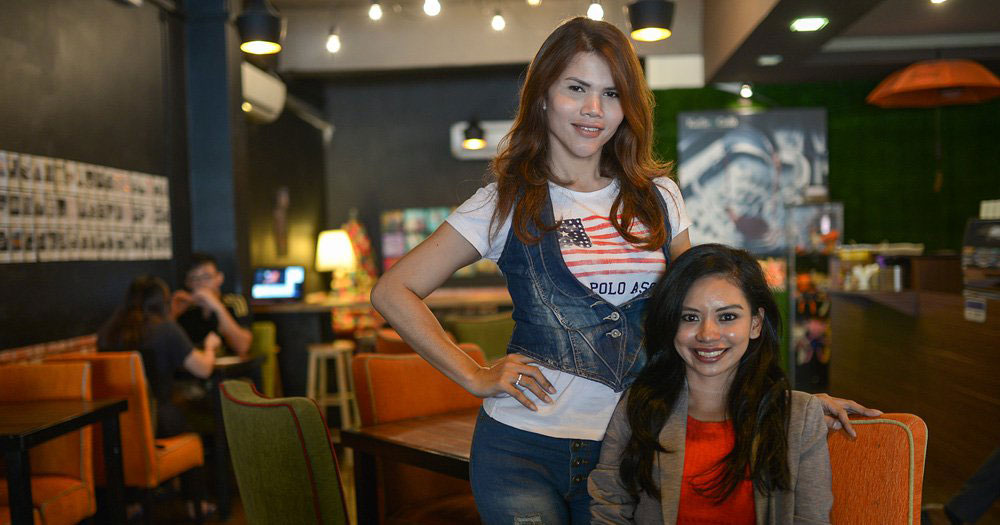
It was a normal day for Fariesha Adnan who works as a supervisor at a department store in Kuala Lumpur – that is until a stranger approached her and asked her if she would like to be a fashion model.
The stranger, Sharmila Ramanathan (photo below), founder of e-commerce business initiative NativesMY, was looking for individuals from marginalised communities to model her Deepavali clothing collection last year, and the lanky Fariesha caught her eye.

Fariesha had harboured dreams of modelling, but as a transgender woman, she never thought it was possible.
“It was like a dream.”
But after the surprise and elation wore off, she said, doubt and scepticism started to seep in.
For starters, she wondered if this was a scam and Sharmila yet another con artist.
And then, after she was convinced that NativesMY is a genuine operation, she faced a bout of self-doubt.
Chuckling self-consciously during an interview with Malaysiakini, she said she had wondered if she could actually do the job. Prior to modeling for NativesMY, she only posed for selfies, she said.
“I suddenly found myself in front of (another person’s) camera. I needed to know how to pose as well as the correct angles.”
At 39, the youthful Fariesha (photo) did not only get to fulfill her dreams in a fashion shoot.
She also found herself walking down a catwalk thanks to coaching from former Miss World Malaysia, Thanuja Ananthan – an experience she believes has pushed her out of her shell.
“I was quite shy before this, now I can talk to people more openly. I’ve never had an opportunity like this, so I’m thankful to Sharmila,” she said with a smile.
The positive feedback, especially on social media, came as a second surprise for Fariesha who has had her share of negative remarks.
It has prompted Fariesha to consider modelling full-time but this is something she will need to mull further.

She was among four transgender women and a refugee who participated in the fashion show in September.
The Deepavali campaign embodies NativesMY’s objective to be more than a fashion brand.
The socially-conscious brand features handmade accessories by artisans in India, Thailand and Tibet, which are then marketed online.
Underlying the e-commerce, however, is the aspiration to use the business to empower marginalised communities, Sharmila said.
When considering how to market her products, Sharmila said she looked at how other brands had hired professional models and celebrities to endorse the brand online and decided to put a new twist to the concept.
“I understand why companies are doing it but I wanted to do something more meaningful.”
“Actually, I was open to anyone from the marginalised community but when I looked for them, it so happened that I found more transgender women,” said Sharmila, who holds a degree in advertising and marketing.
In fact, the Deepavali line was also dubbed “Hope” and dedicated to marginalised communities in hopes for improvement in the lives of those in such communities.
The desire to push for social change had before this seen her leave a plum job at an advertising firm to work for an international NGO, but it was not until she found a way to meld both her interests that she found fulfilment.
But life has not been a bed roses since she founded NativesMY.
“Now, most of the time when I meet my models, I will be taking a cab and carrying most of the bags (of clothes) for them to change into. I have bruises on my arms because I carry these bags.
“But at the end of the day I ask myself – am I happy? I am.”

The venture is fully-funded by Sharmila using her savings, as she does not want NativesMY to be constrained by investor requirements.
For example, she said, she did not want an investor to tell the brand’s models they cannot dress as women.
A group of transgender women last year lost their bid to declare unconstitutional a syariah enactment that criminalises cross-dressing.
Muslim transgender women risk arrest and action when dressing as women, as their identity cards state they are male – the gender they are assigned at birth.
A transgender man recently also lost his bid to change his gender on his identity card, after going through gender affirmation surgery.
“I want Natives to be a platform where people can be who they are. If (the transgender women) want to keep long hair or wear make-up as most of the time they are told not to,” Sharmila said.
Sharmila hopes the experience will help the models conquer their self-doubt and improve their lives.
“At the end of the day, I feel that this fundamental skill is the most important thing in getting a job and living a better life.”
“Especially for individuals from the marginalised community because they are so discriminated, stigmatised that they do not have basic skills such as confidence,” she said.
One of the NativesMY models had a passion for doing make-up, for example, but never had the confidence or the opportunity to pursue it.
After participating in the Deepavali campaign, Sharmila said, the model started following her dreams by becoming the make-up artiste for a local pageant participant.
This is an experience Sharmila hopes to replicate with those from other communities who have had to live on the fringes to society stigma.
Among those she hopes to recruit for the next campaign are those living with HIV, she said.

She also hopes to partner with corporate bodies through corporate social responsibility projects, at least to raise awareness among employers of employment discrimination faced by these groups.
“When I was looking for transgender people, I literally went to all malls to find them. It was so hard to find them.
“I think it’s because they have not been given opportunities to get proper jobs.”
“The next step is to see more progress (on this front), in that I hope that more companies will be more open to hiring them and giving them a chance,” she said.
Sharmila believes there is some level of acceptance already out there, evident in the positive feedback to NativeMY’s campaign on social media.
But she hopes Malaysians can do more than just share positive messages on social media.
“Malaysians just share things but that’s just creating awareness. They should go to the nearest NGO and do something.”
Do you agree?
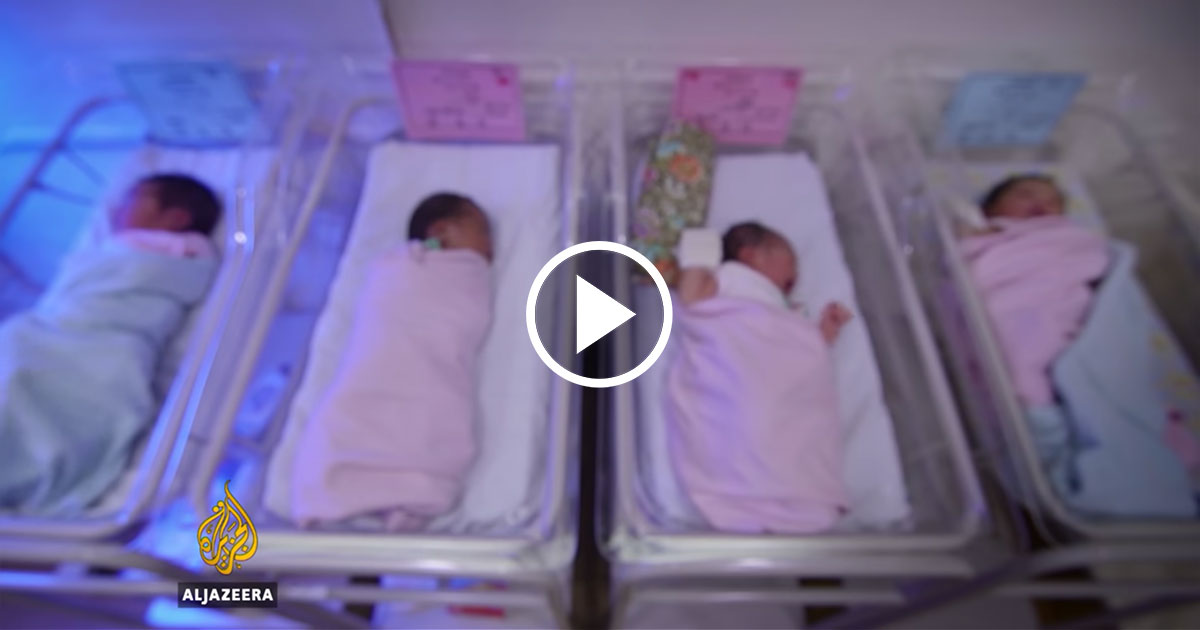
Video by Al Jazeera English
A woman and two men were arrested on Wednesday after police raided clinics and homes on the outskirts of Kuala Lumpur.
Share this
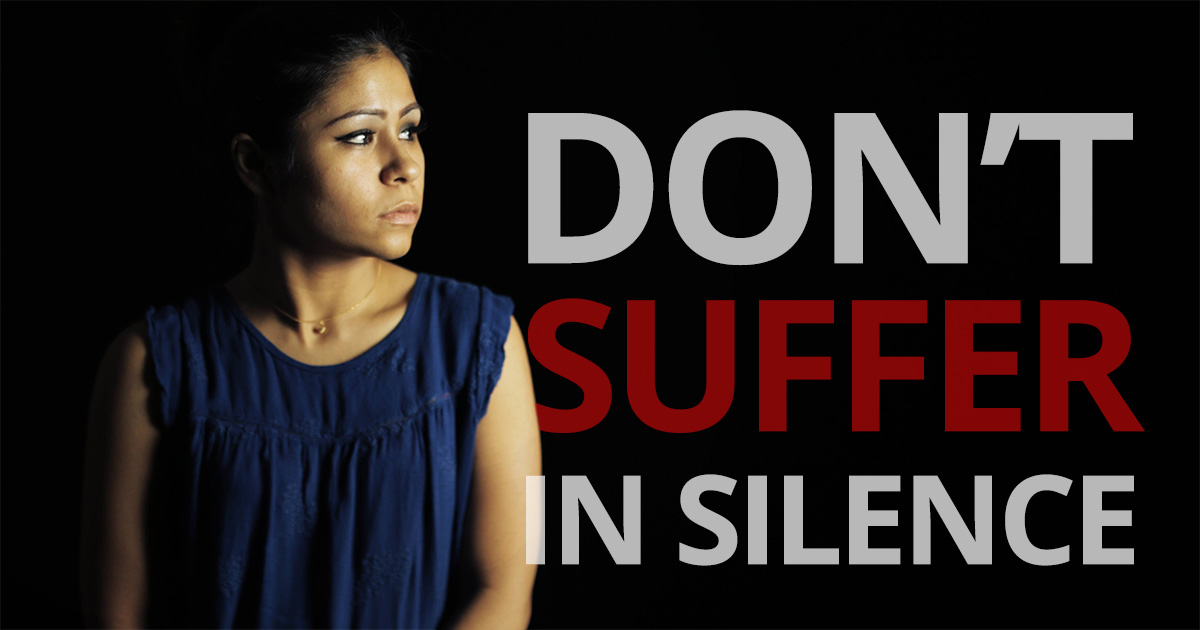
1 in 4 women experience Domestic Violence during her lifetime and more than half of these women have children that watch them helplessly as they are abused.

Repercussions of Domestic Violence vary from woman to woman depending on the type abuse they would have experienced. It can be from their partners, members of the family or total strangers.
The different types of abuse are:
| Physical | This includes Slapping, hitting, kicking, choking, restraining or any other torture that involves human contact. |
| Emotional | In this type of abuse comes intimidation, degradation, being yelled at or being given a silent treatment. This will also lower their self esteem. |
| Sexual | Sexual activity without her consent and without any contraceptives. |
| Verbal | When you are being called names, being accused of doing things that you haven’t done, when for example your spouse lies to you. |
| Social | Yes! This is actually a form of abuse, that includes a lot of things like a controlling husband, being ill treated in the public or stalking you wherever and whatever you do. |
| Financial | Financial abuse varies from not being able to support the family making them starve, Or it’s the woman who is working but her money is being used by her husband for things that do not benefit the family. |
| Human Trafficking | Although this stands as another different and serious issue, it still remains a type of abuse, as women are forced work in terrible conditions as prostitutes, servants or in farming areas. They are often beaten up, drugged and starved. If she refuses, her children will be at risk. |
According to the Kuala Lumpur Hospital Emergency and Trauma Department, 4000 cases have been reported from January 2016 to January 2017 in Malaysia. With the highest of 498 in Selangor and most cases reported from Malays compared to Indians and Chinese.
Apparently reports have increased rapidly compared to other years. This is because more people have become aware of Domestic Violence as a crime, and are now reporting.
Examples of Malaysians who suffered recent domestic violence are Ana and Shona Roy.
Ana experienced domestic violence for 13 years. Her husband forced her to stop working and he treated her like a slave. She faced physical abuse and the only thing that made her endure all this was for her two sons. Read more
Shona Roy was married to a Saudi-Arabian man, and endure domestic violence for 8 years. The husband was cheating, violent to the extent that he chased her around with a knife, refused her custody of her children and then tried to kidnap them from the hands of their mother.
Shona Sinha Roy // image via says.com
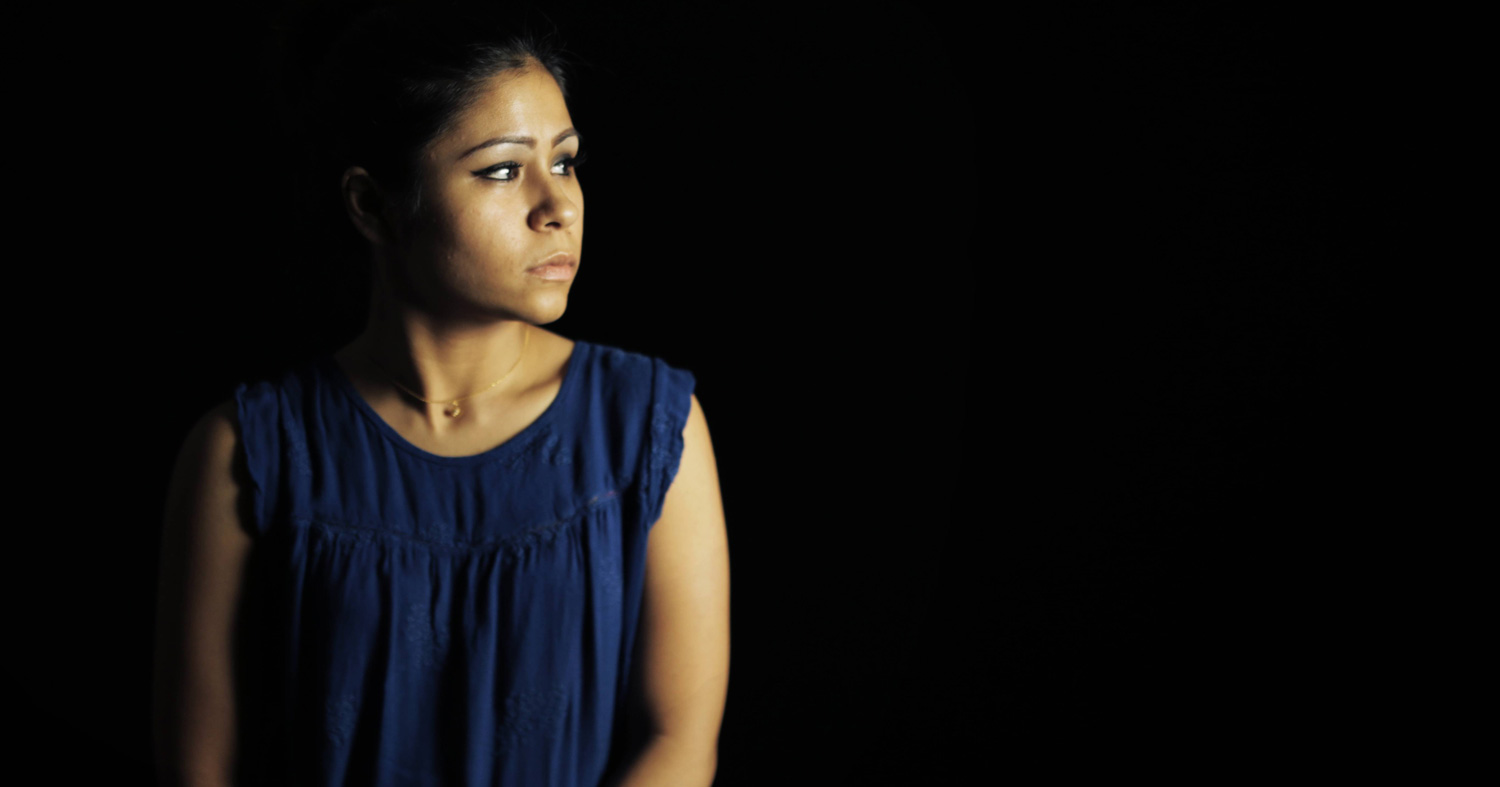
Imagine the pain that these two women have endured. Would you want to suffer the same fate? Take not, it can happen to anyone. That brings us to the next issue, how can we stop Domestic Violence. In Order for us to prevent this trivial issue we need to be aware of the causes.
Remember, the abused is not the cause of the problem. It is the abuser who is in total control and who takes full responsibility for us.
Abusive relationships, early marriages and violence make women susceptible in marriage. They will not have the courage to say no to an abusive husband. In cases where there are financial problems and employment is scarce, they are scared they will not be able to take care of their children so they’d rather be abused and have their children safe.
Those that stay in an abusive relationship for the sake of their children are making the biggest mistakes of their lives, and also their children’s lives because they are greater chances that your children will also resort to Domestic Violence thinking it’s a normal way of living.
But is it fair for women to be caught in such a dilemma, and in this day in age? No matter how many times women beg for help, society turns a blind eye to them, families put pressure on them, and people around trampled on them, make them realized that they don’t have a voice in this world. But after all, they’re still living and fighting for themselves until now. Their perseverance is admirable though they were treated badly. Without women, can the world be advanced like this? And why must these unfortunate people suffer severe consequences and unjust though they have devoted a lot for humanity?
In conclusion, violence against women is a difficult problem to solve. This is not always under control to be able to fix at all. But people will always have the most reasonable resolutions. I hope that this issue will soon be resolved smoothly so that all of the women will no longer have to suffer from those pains.
WAO Hotline: 03 7956 3488
WhatsApp/SMS TINA: 018 988 8058
WAO Hotline: 03 7956 3488
WhatsApp/SMS TINA: 018 988 8058

Understand the common causes that lead to domestic violence and ways to prevent it.
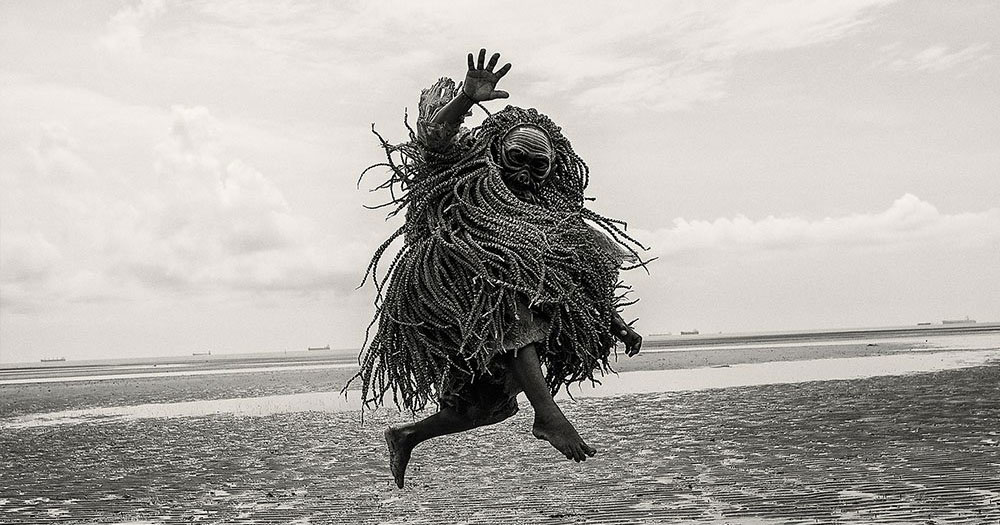
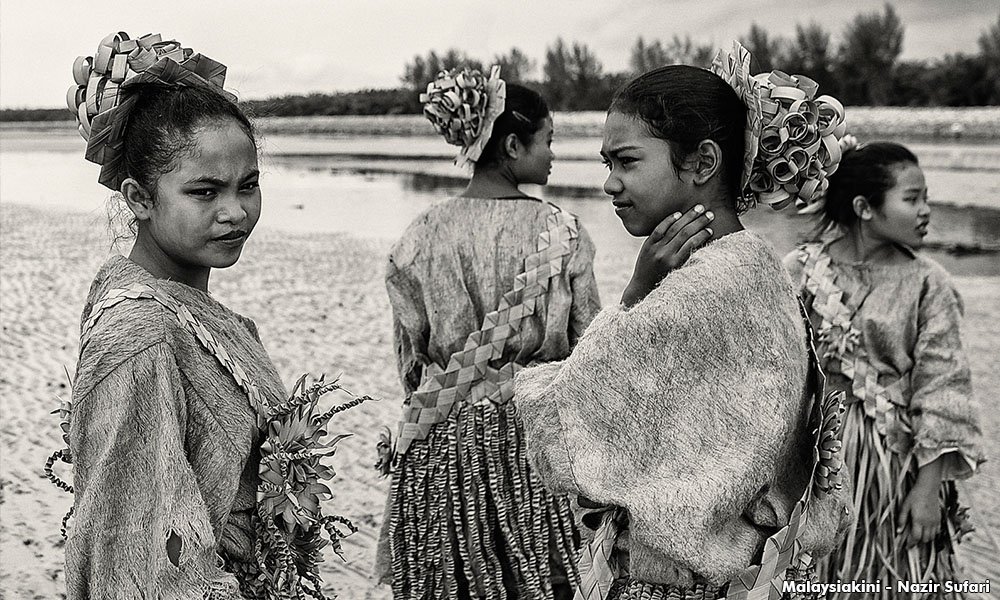
Women of the Mah Meri tribe wearing a traditional clothes before preforming traditional dances on Pulau Carey beach.
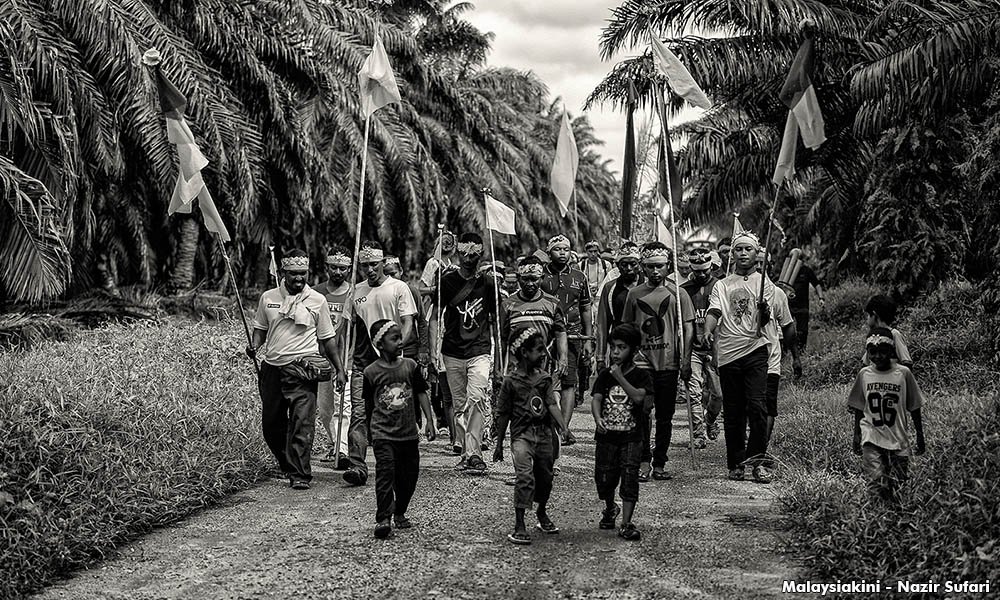
Members of the Mah Meri tribe walk towards the beach to begin the ceremony – the Hari Moyang Puja Pantai festival to celebrate the spirit of their ancestors.

An altar erected during lowtide for the ‘Puja Pantai’ ritual at a beach in Pulau Carey. In the background is the Straits of Malacca which is one of the busiest straits in the world.
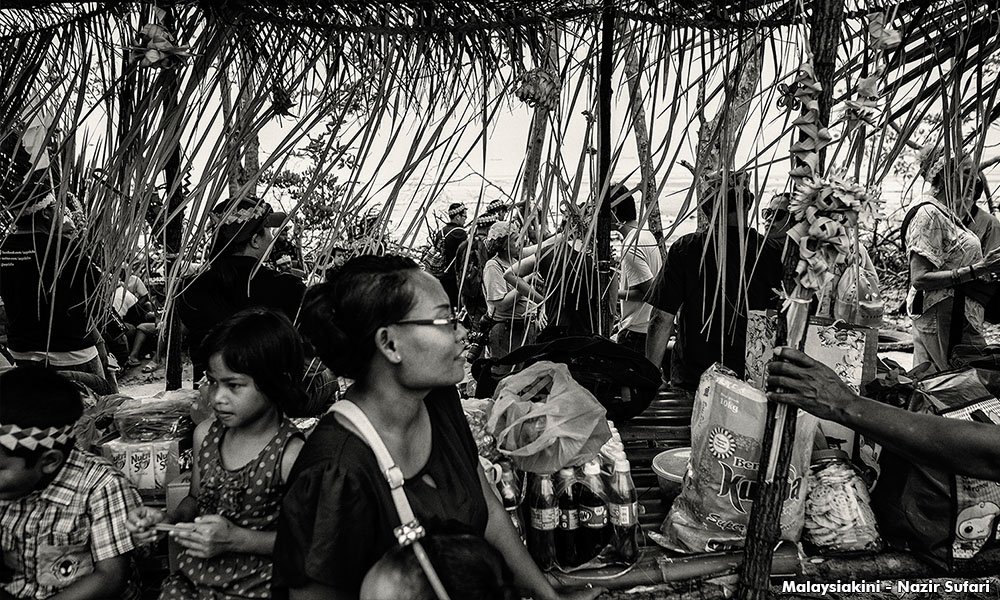
Members of the Mah Meri tribe and tourists waiting near the beach for low tide in Carey Island.
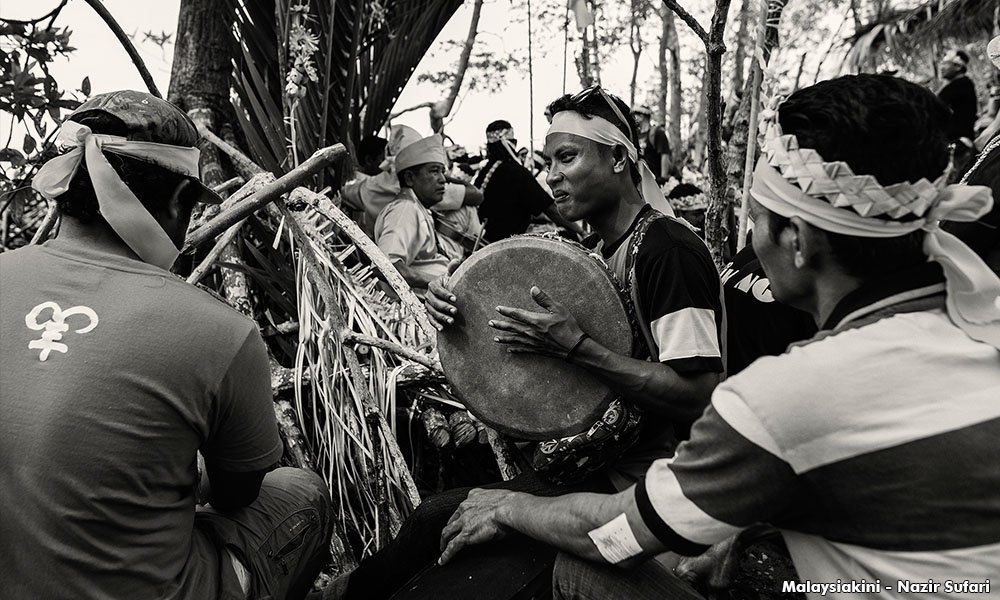
Members of the Mah Meri community perform traditional music during the ‘Puja Pantai’ ritual, which is to celebrate their ancestors.
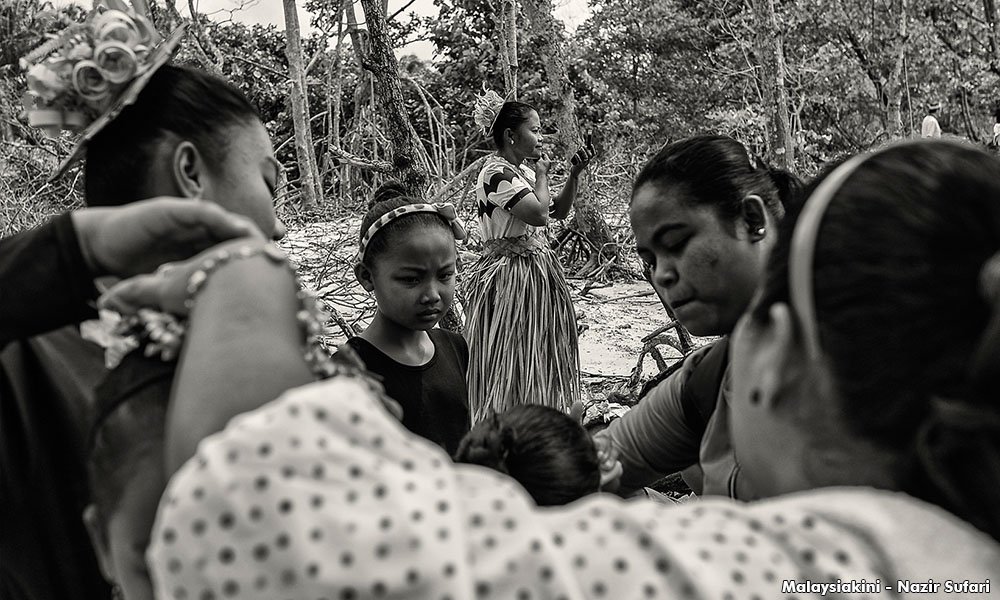
Members of the Mah Meri tribe apply make-up and make final preparations on the beach before performing a traditional dance.
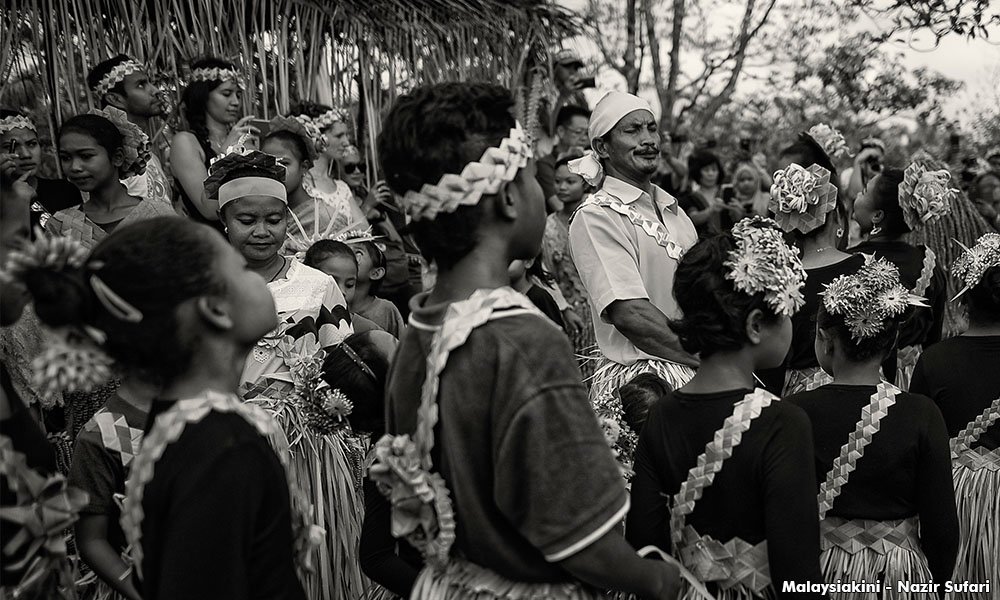
Members of the Mah Meri tribe perform a dance at Pulau Carey.
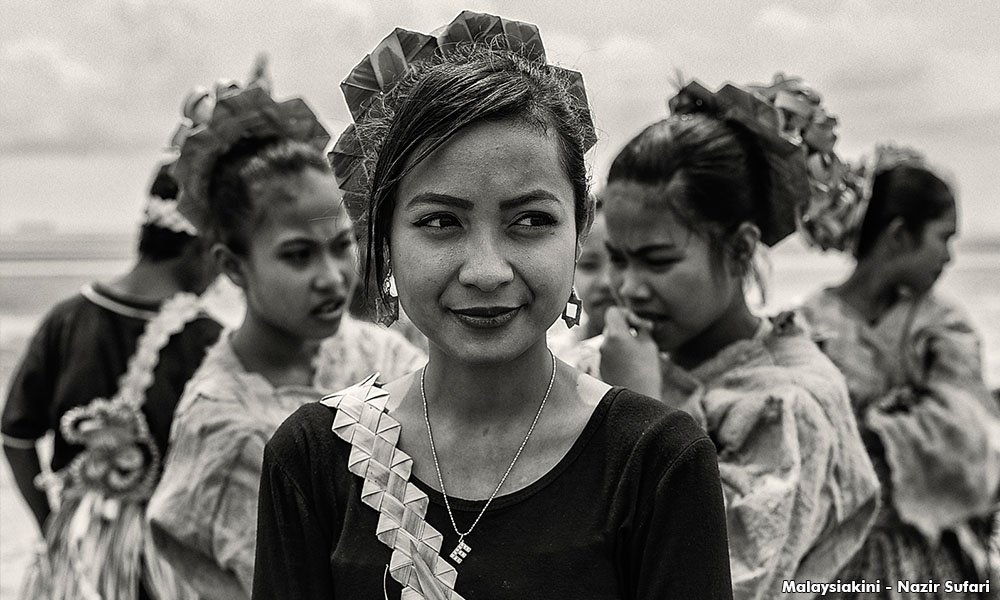
Faces of the Mah Meri people in Pulau Carey before the ritual starts.
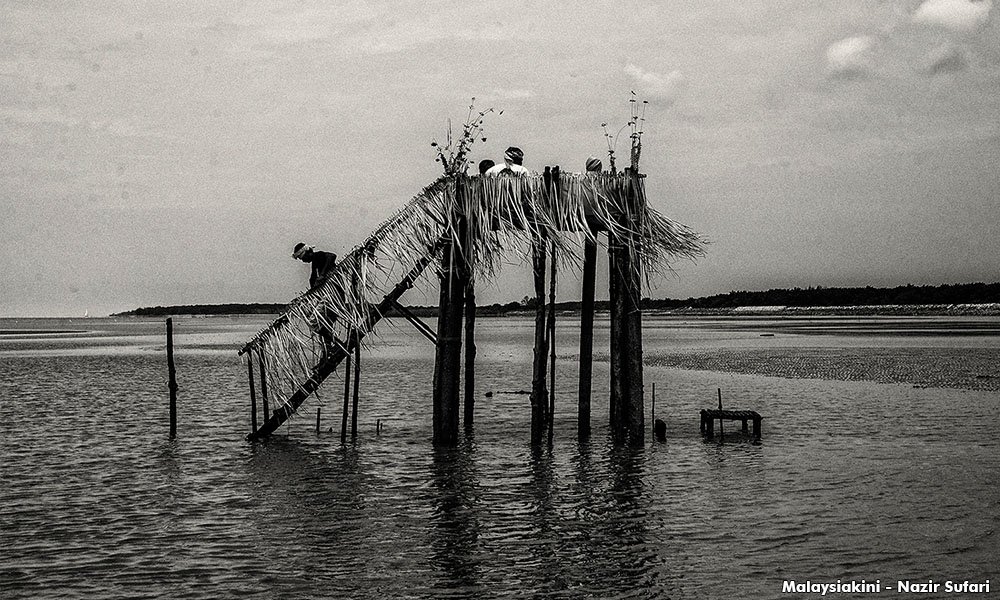
The altar erected near the beach for the ‘Puja Pantai’ ritual.
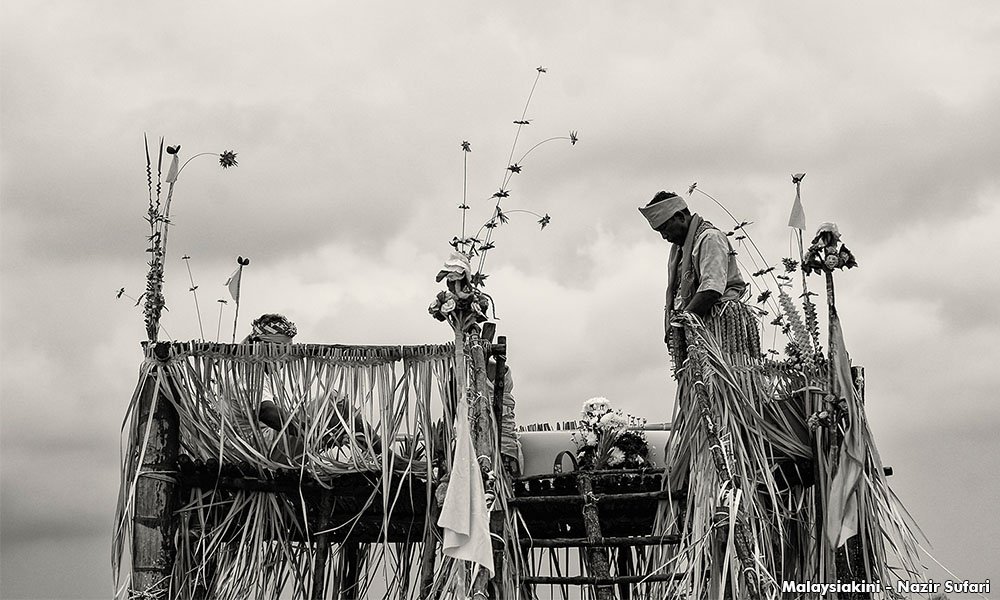
A shaman from the Mah Meri tribe on a shrine erected for the ‘Puja Pantai’ ritual.
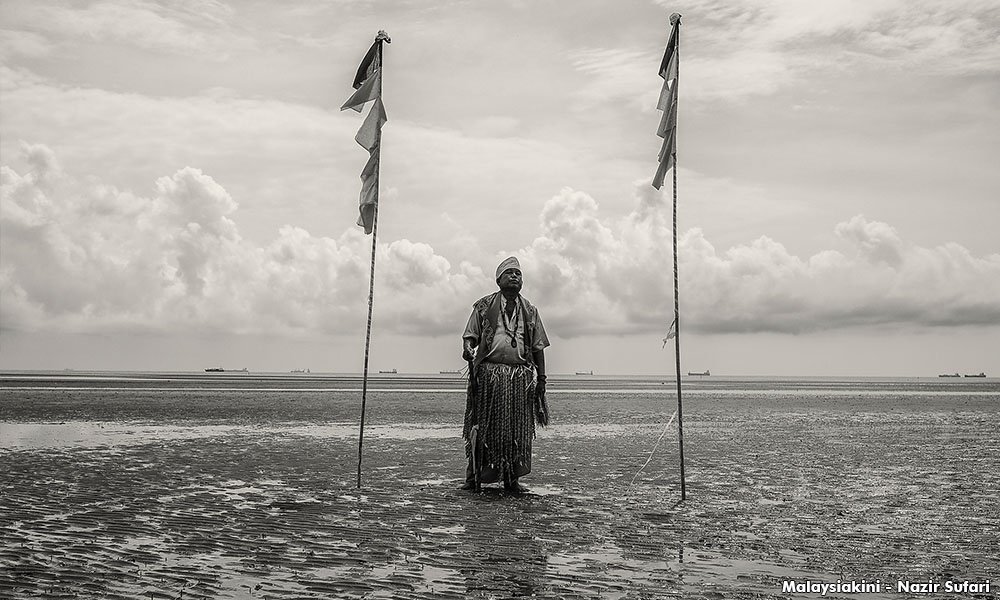
A Mah Meri shaman stands on the beach during the Hari Moyang Puja Pantai festival at Pulau Carey.
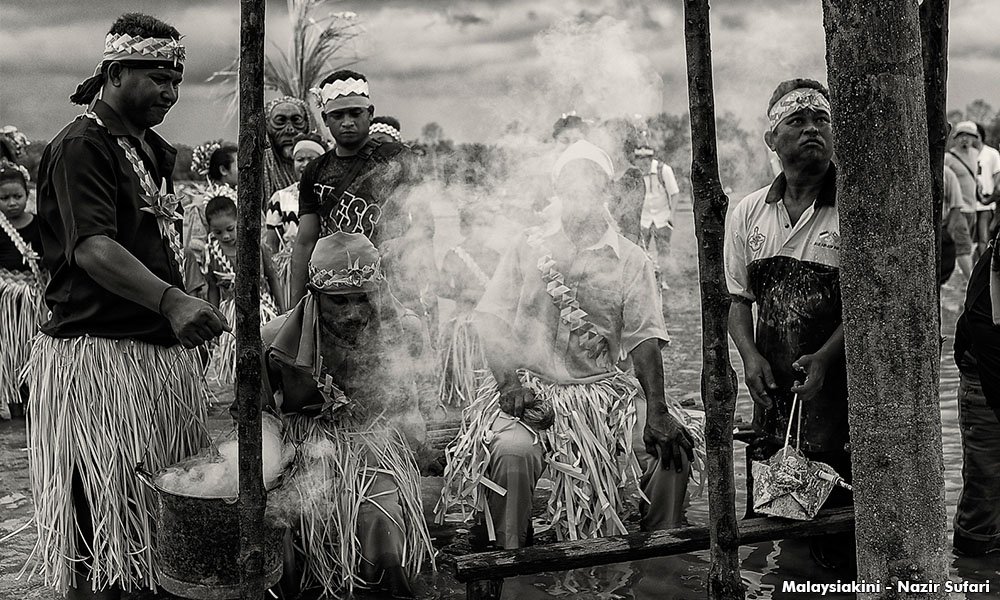
A Mah Meri tribesman siting while in a trance as the spirit of a Moyang enters his body.
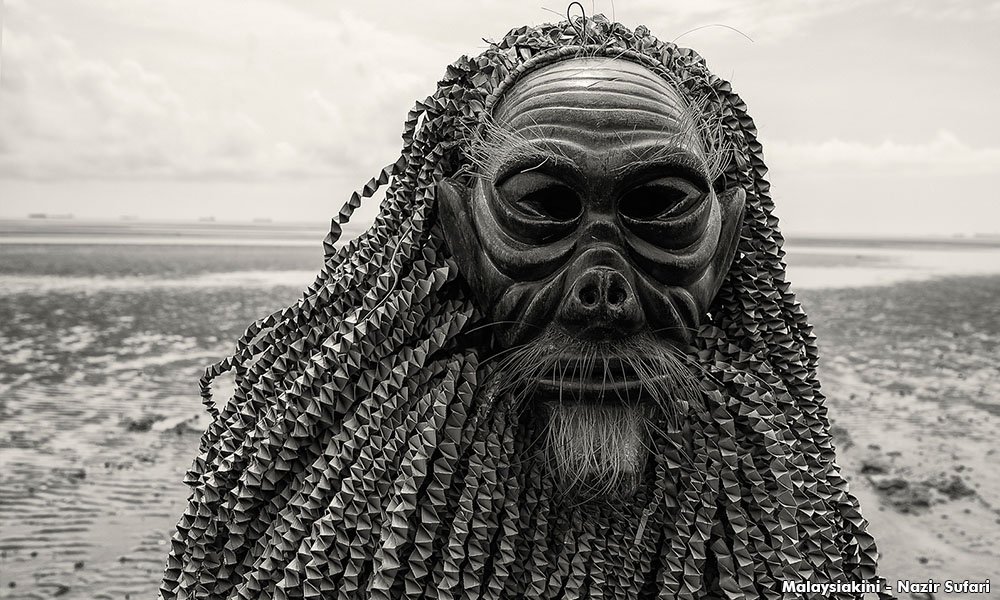
A portrait of a Mah Meri tribesman with a wooden mask which he wears when he performs the ‘Main Jo-oh’ dance.
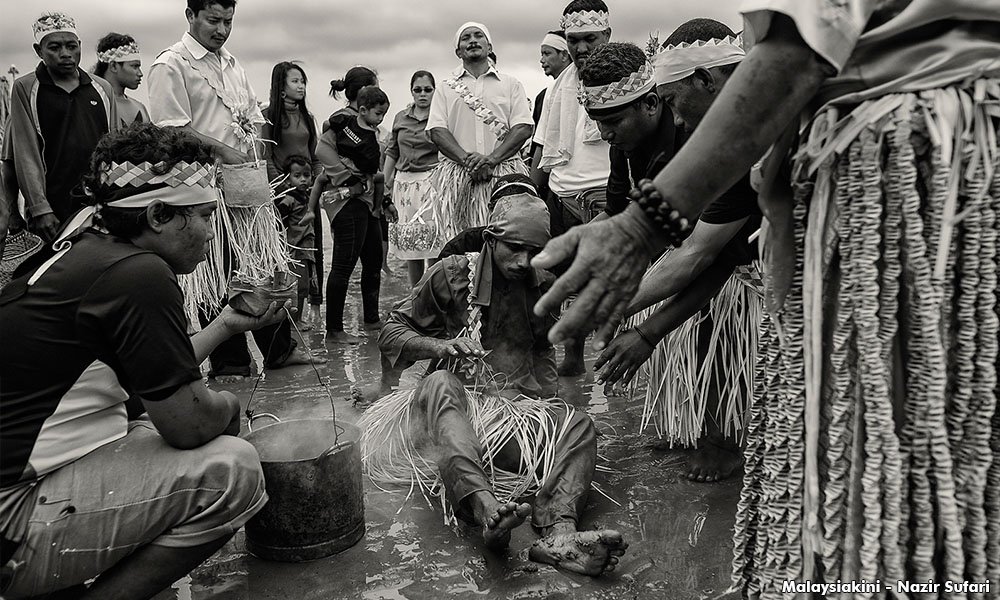
Smoke from the burning incense to summon spirits.
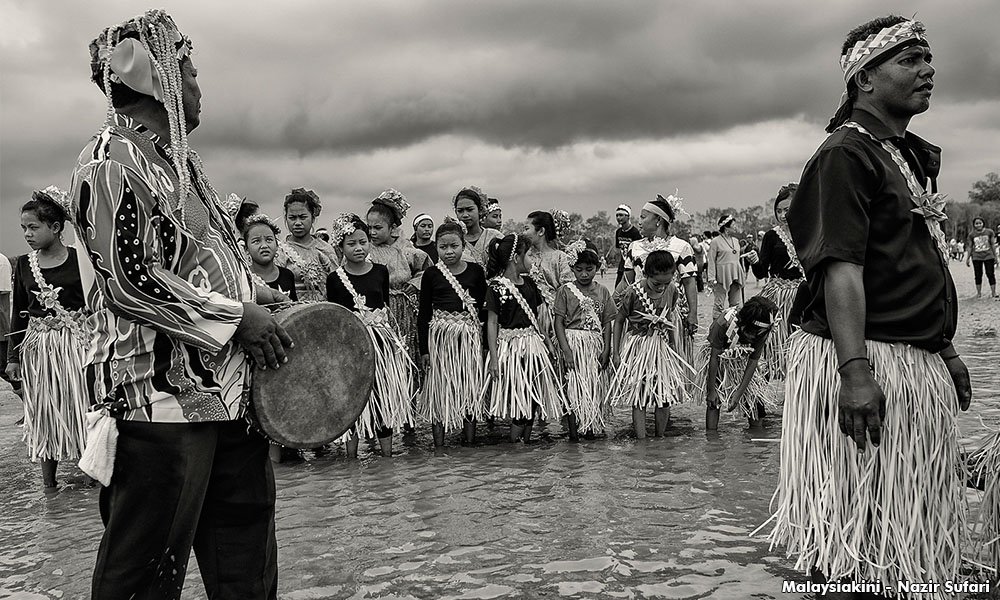
A Mah Meri Tok Batin (village elder) during the ‘Puja Pantai’ festival.
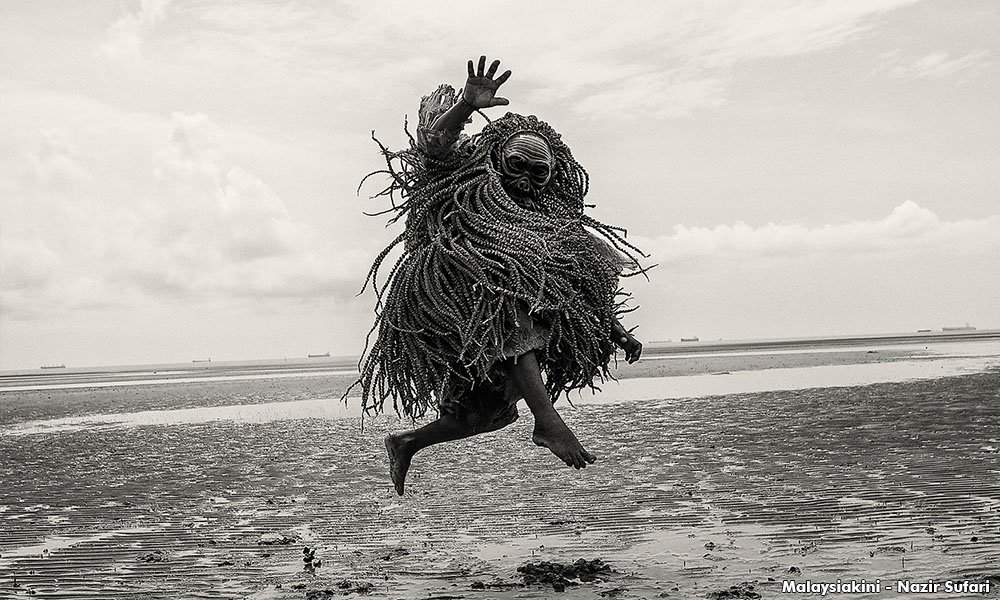
Mah Meri tribesman mid-dance during the festival.
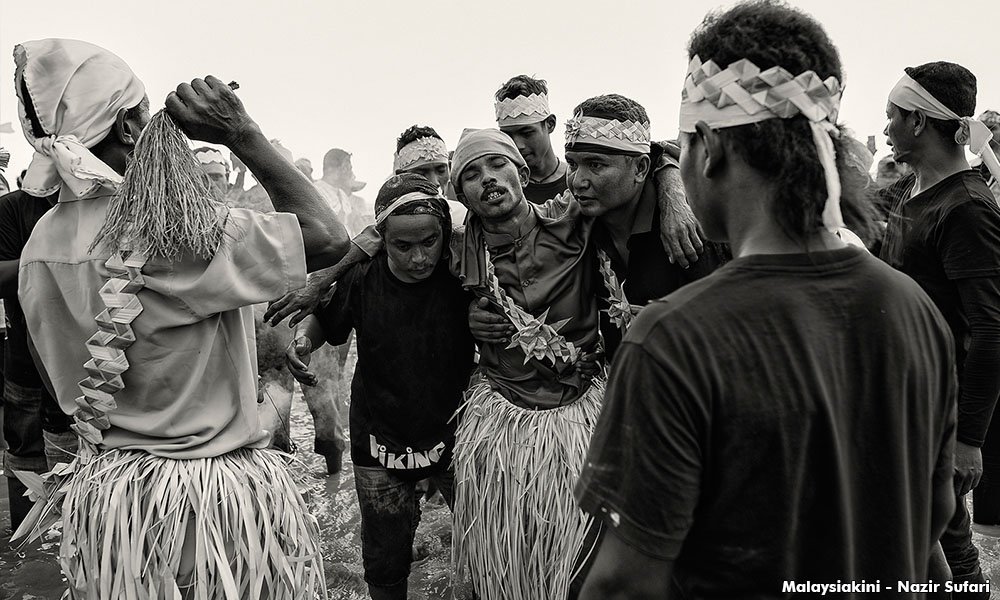
Mah Meri men assisting a fellow tribesman who was in a trance, during the ritual.
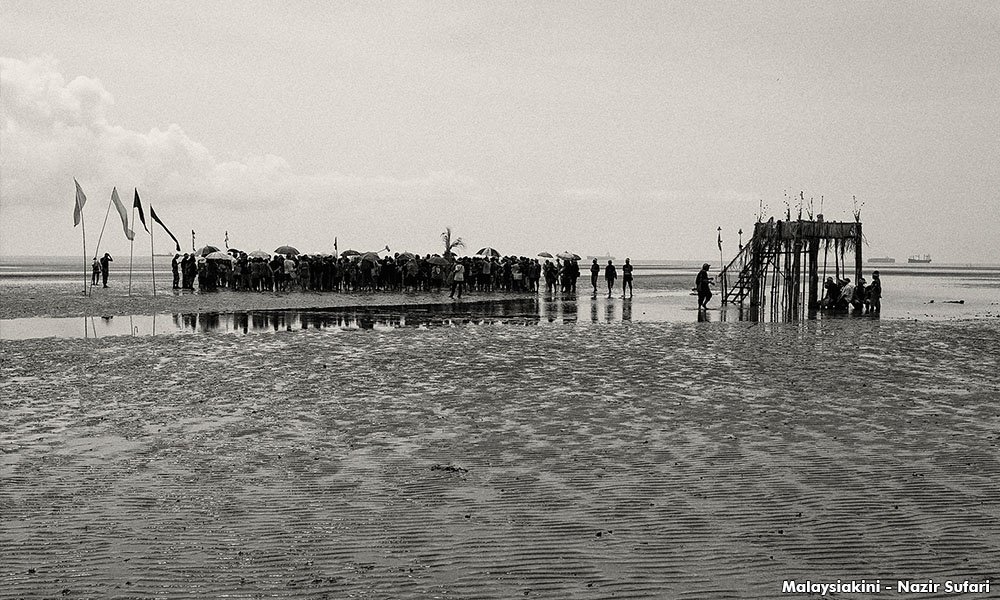
The ‘Puja Pantai’ ritual, viewed from afar.
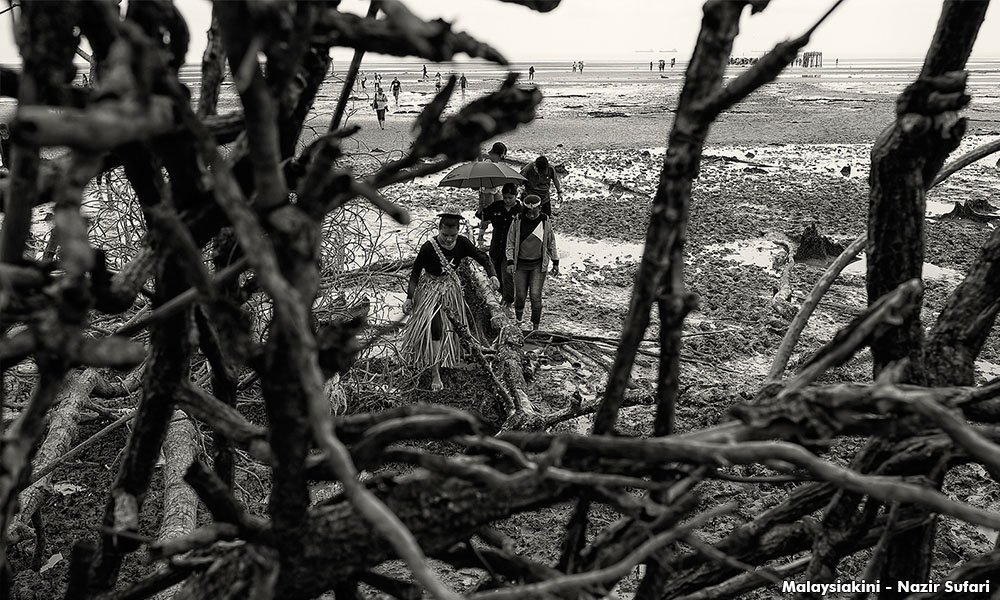
Members of the Mah Meri tribe leave the beach after the ‘Puja Pantai’ ritual ends.
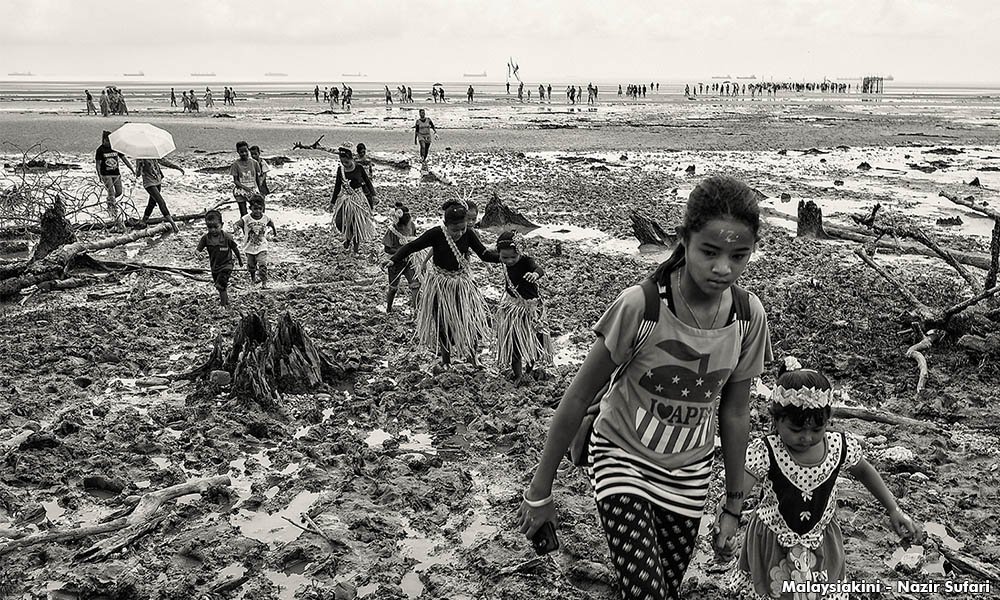
Will this tradition be maintained by the younger generation so that it can be passed on to their children or will it be lost through modernisation?